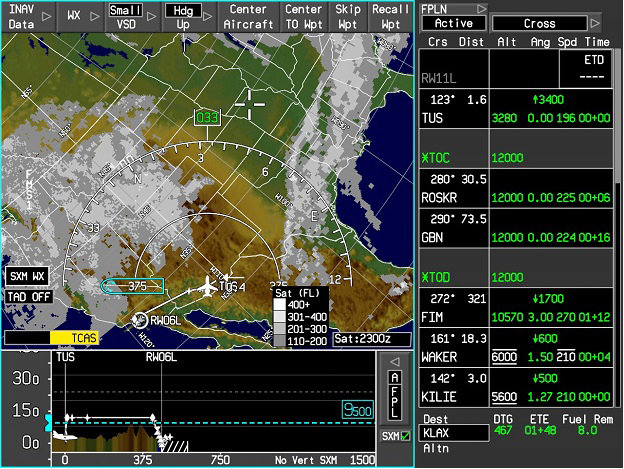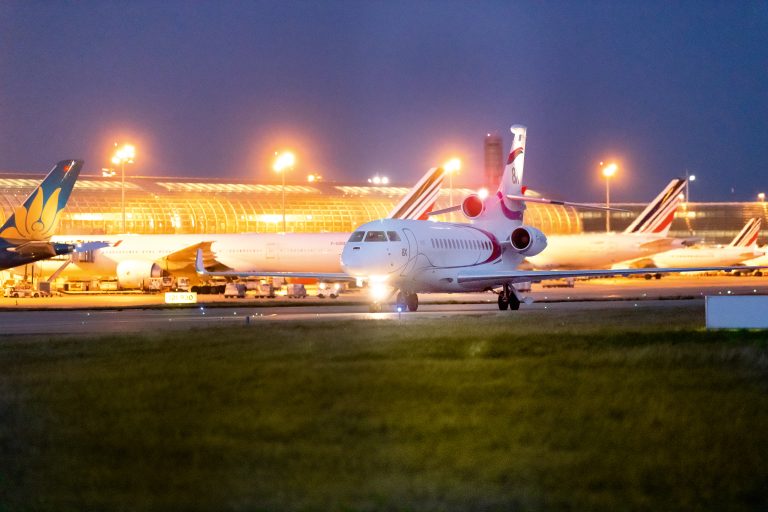Dassault Aviation has introduced the fourth generation of the award-winning EASy flight deck, with more vivid displays, more processing power, new capabilities and additional safety features.
Based on a Honeywell Primus Epic-based system, EASy IV will be standard on the Falcon 6X, due to enter service by mid-2023, and, beginning in 2023, on all new-build Falcon 8X aircraft. It will also be available as an upgrade on earlier Falcon 7X and 8X aircraft.
“The EASy flight deck has long been the industry benchmark for situational awareness and crew coordination, and we are very pleased to release this latest upgrade to our customers,” said Carlos Brana Executive Vice President of Civil Aircraft. “EASy IV will enable them to bring their operations up to the latest industry standards and significantly enhance their aircraft value.”
Enhanced situational awareness
With EASy IV, an advanced interactive navigation map (INAV) better depicts airspace restrictions and terrain resolution and, combined with a new interactive vertical situation display (VSD), gives a better picture of thunderstorm vertical development. These features provide pilots with a better sense of where they are heading in three dimensions while decluttering the flight display, and allowing them to layer navigation, weather and traffic information as desired.
Additional new features greatly reduce the risk of runway incursion. On the ground, 2D/3D airport moving maps (AMM) give a sharp display of runways, taxiways, ramps and other airport features, making ground navigation easier at crowded airports, particularly in low visibility. A new TCAS system includes ADS-B In and Out, so pilots will see traffic in the air and on the airport map.
Operators can also add SiriusXM® weather products with all the graphic and text weather data it provides. These images cover all of the U.S., Canada and the Caribbean.
Streamlined aircraft operations
The latest version of Honeywell’s NextGen FMS provides yet additional capabilities, including new RNP AR approaches for improved access to runways affected by terrain or high-density traffic. New graphic CPDLC features provide seamless data communications for different phases of flight, reducing crew workload. And the system offers broader compliance with various datalink standards.
New Jeppesen chart features are also integrated into EASy IV, including a night mode that keeps an even light level on the flight deck during night approaches. Charts feature a new Panoramic mode and an aircraft symbol georeferenced to approach charts, adding another valuable situational awareness cue.
By upgrading to EASy IV, Falcon 7X operators can add a valuable feature that is standard on the Falcon 8X — an enhanced auto-throttle option. This allows pilots to secure one engine while retaining automation for the other two.
Improved Operational Safety Features
An improved takeoff and landing data (TOLD) function allows additional inputs for more precise calculation of realistic landing distances. This enables operators to meet new EASA and FAA mandates on runway performance calculations EASA and to comply with the latest regulations for landing distance at time of arrival (LTDA).
A new runway overrun and alerting system (ROAAS) analyzes aircraft trajectory and TOLD performance to determine if the aircraft can come to a full stop within the remaining runway length. Early PFD alerts improve pilot perception of runway end margin and safer approaches and go arounds.
EASy history
Dassault introduced the orginal groundbreaking EASy (Enhanced Avionics System) flight deck way back in 2002 on the Falcon 900EX, bringing a new level of situational awareness and flight planning ease to the business jet community. EASy IV continues that tradition, offering more capabilty for pilots while meeting the new demands of advanced air traffic management systems.
ABOUT Dassault Aviation
Dassault Aviation is a leading aerospace company with a presence in over 90 countries across six continents. Dassault designs and builds the family of Falcon business jets as well as the Rafale fighter jet. The company employs a workforce of over 12,000 and has production facilities in both France and the United States, and a worldwide service network. Since the rollout of the first Falcon 20 in 1963, over 2,650 Falcons have been delivered. The tri-jet and twin-engine lines offer outstanding efficiency and comfort, with ranges from 4,000 nm to 7,500nm. They include the new flagship Falcon 10X, the pioneering Falcon 7X and 8X, the extra widebody Falcon 6X, and the versatile Falcon 900LX and 2000LXS.
For more information about Dassault Falcon business jets, visit: www.dassaultfalcon.com
Contact Us

Vadim Feldzer
Head of Falcon Global Communications
Dassault Aviation
78 Quai Marcel Dassault
Cedex 300
Saint Cloud, Cedex 92552
France
Work Phone : +33 1 47 11 44 13

Andrew Ponzoni
Senior Manager, Communications
Dassault Falcon Jet
200 Riser Road
Little Ferry, NJ 07643
United States
Work Phone : +1 201 541 4588











